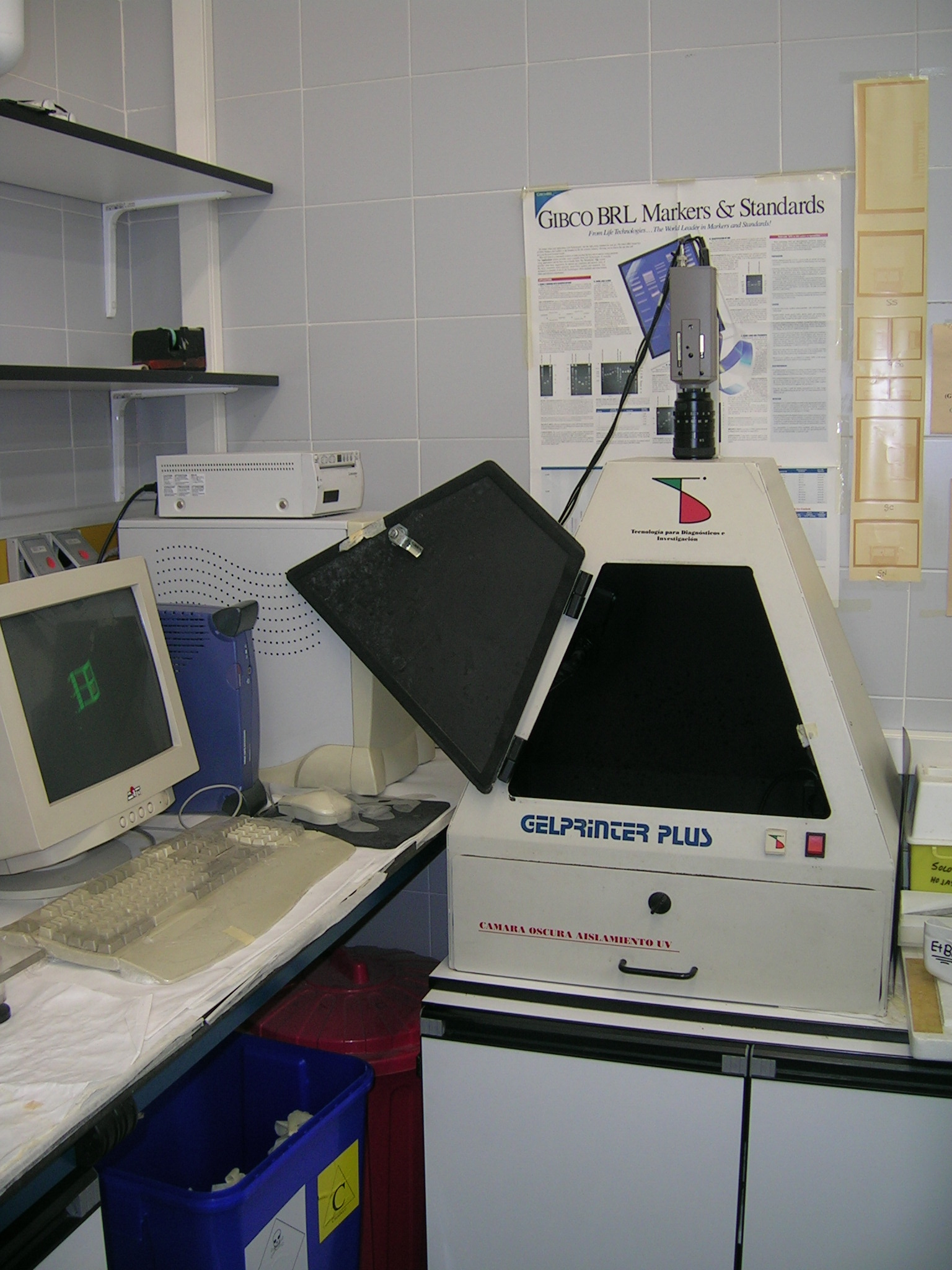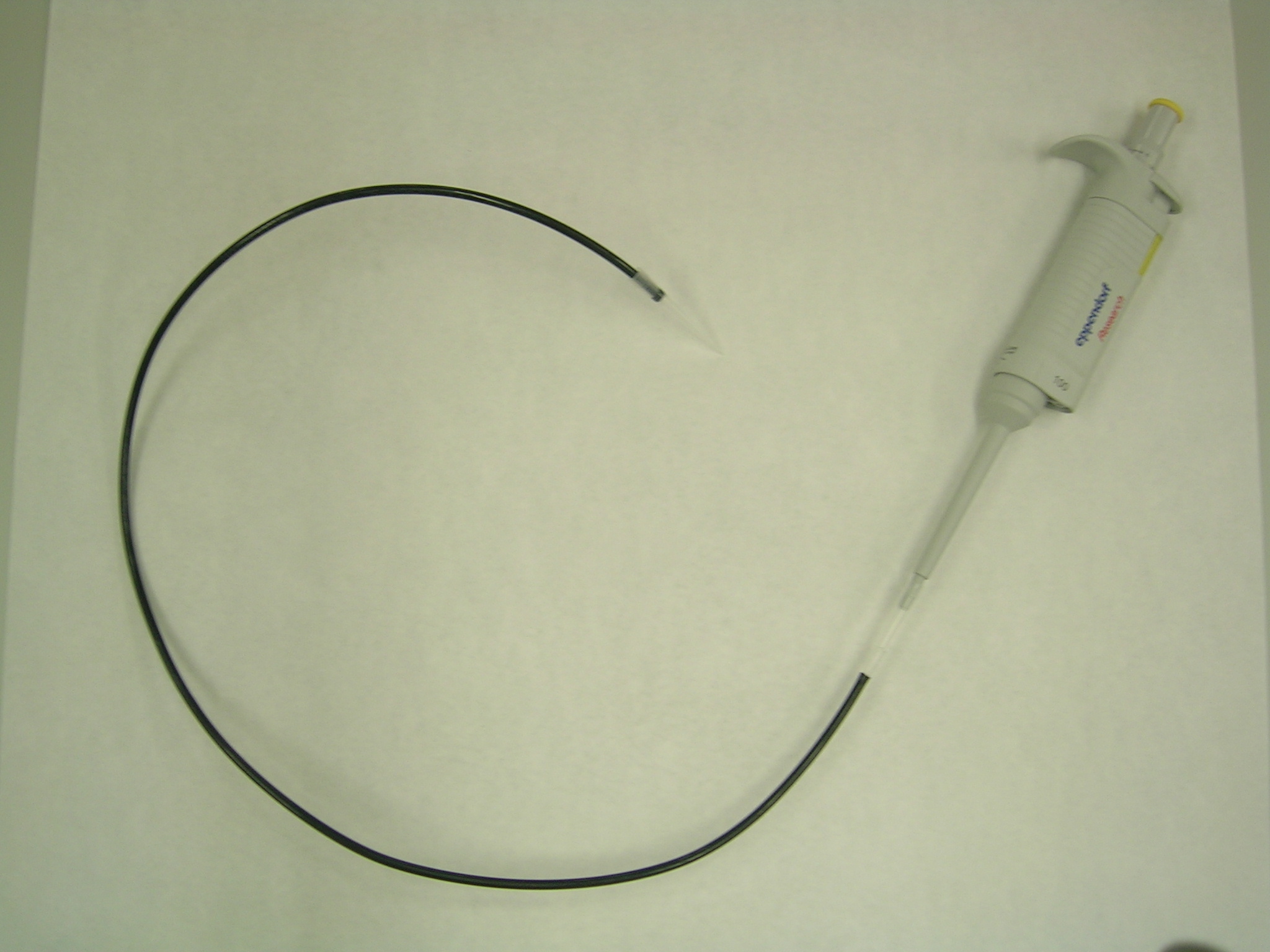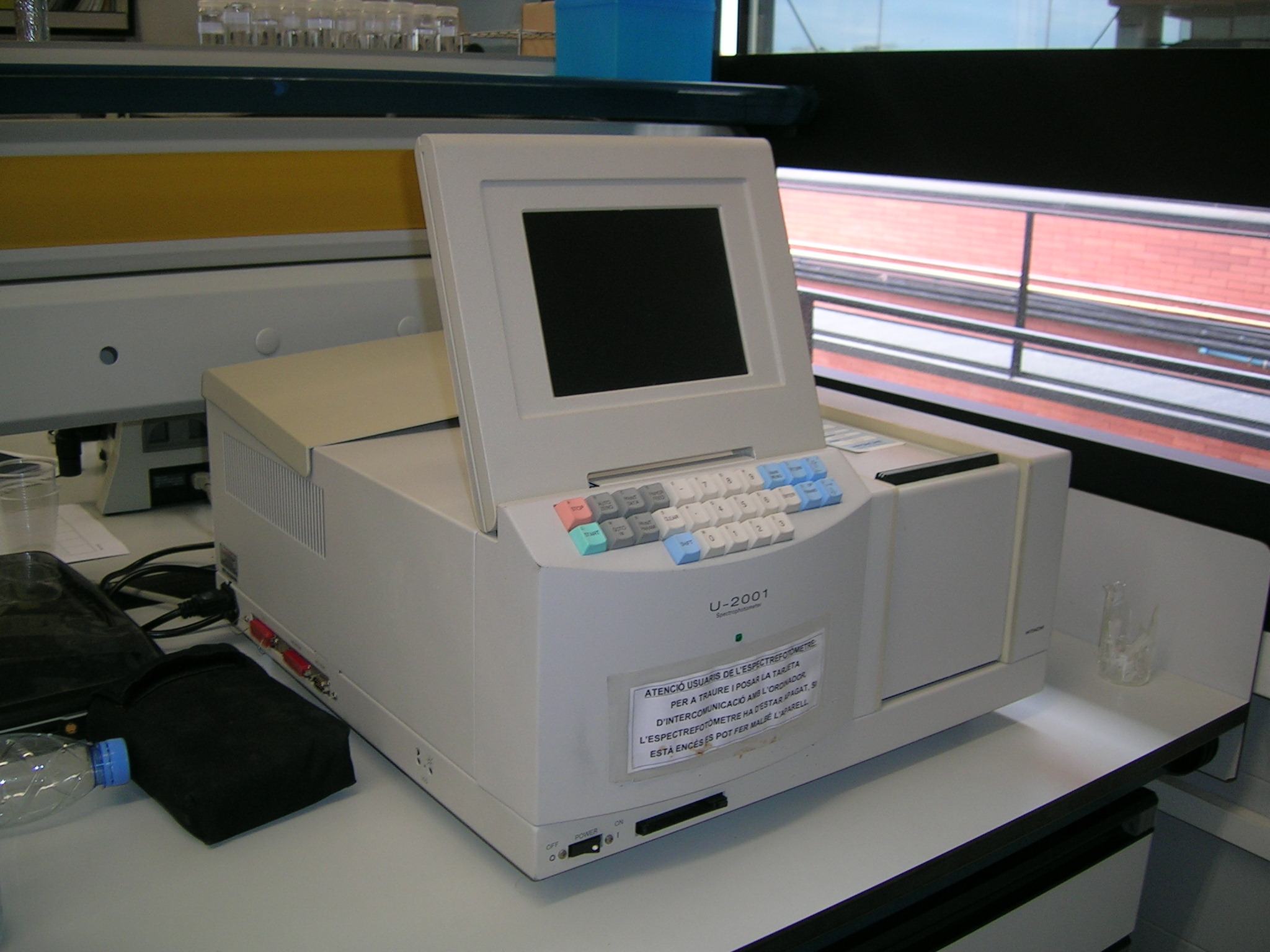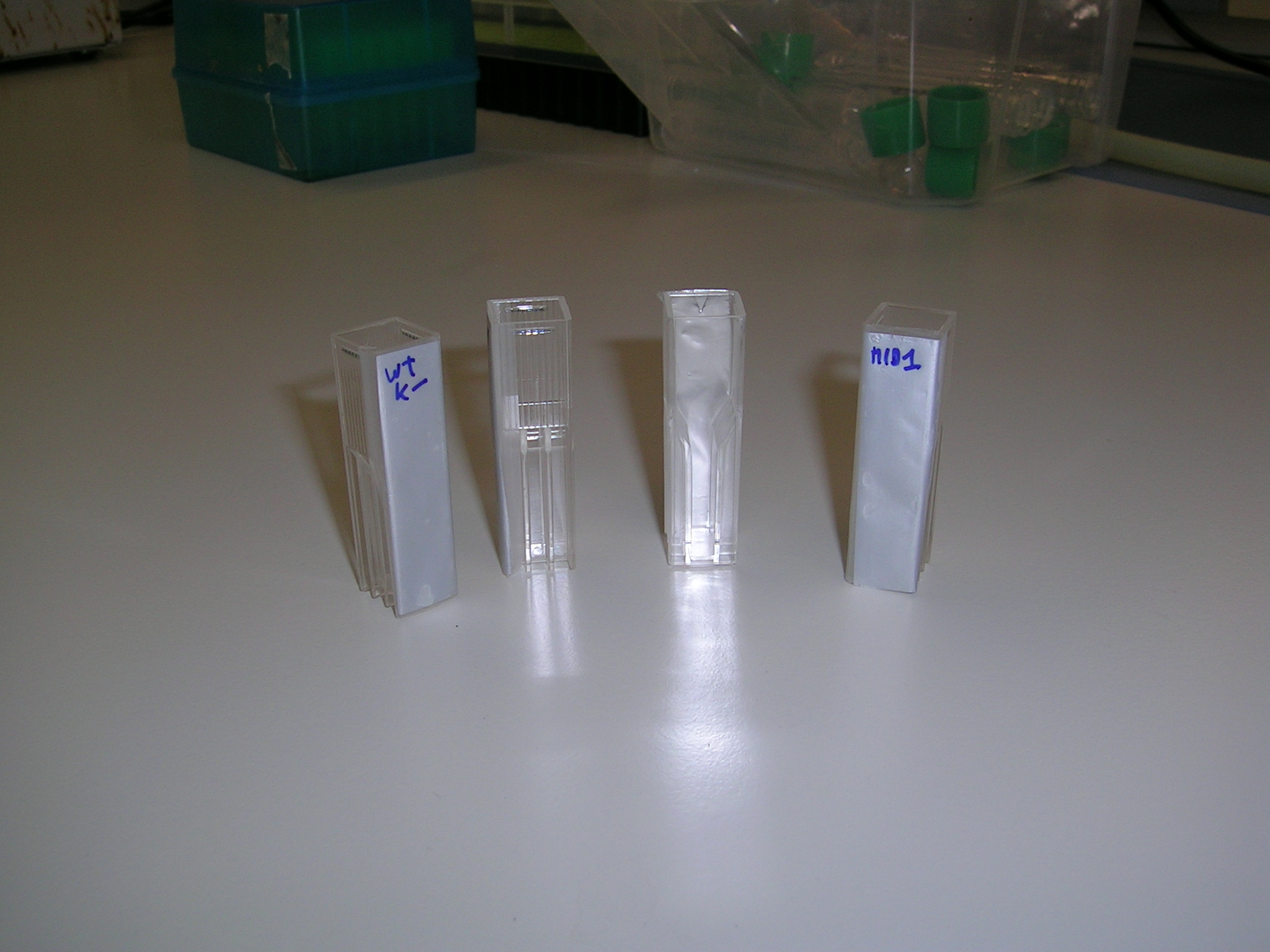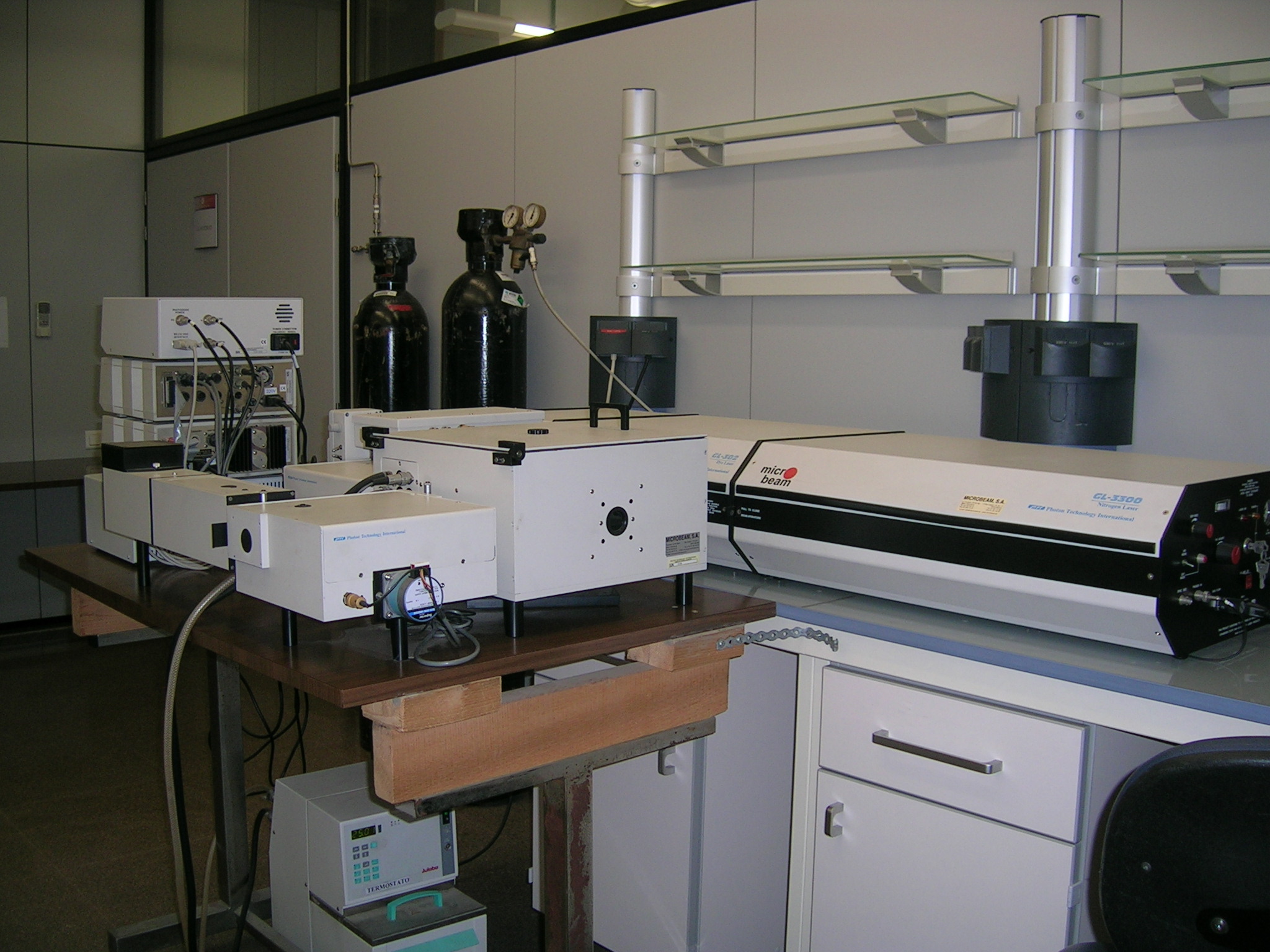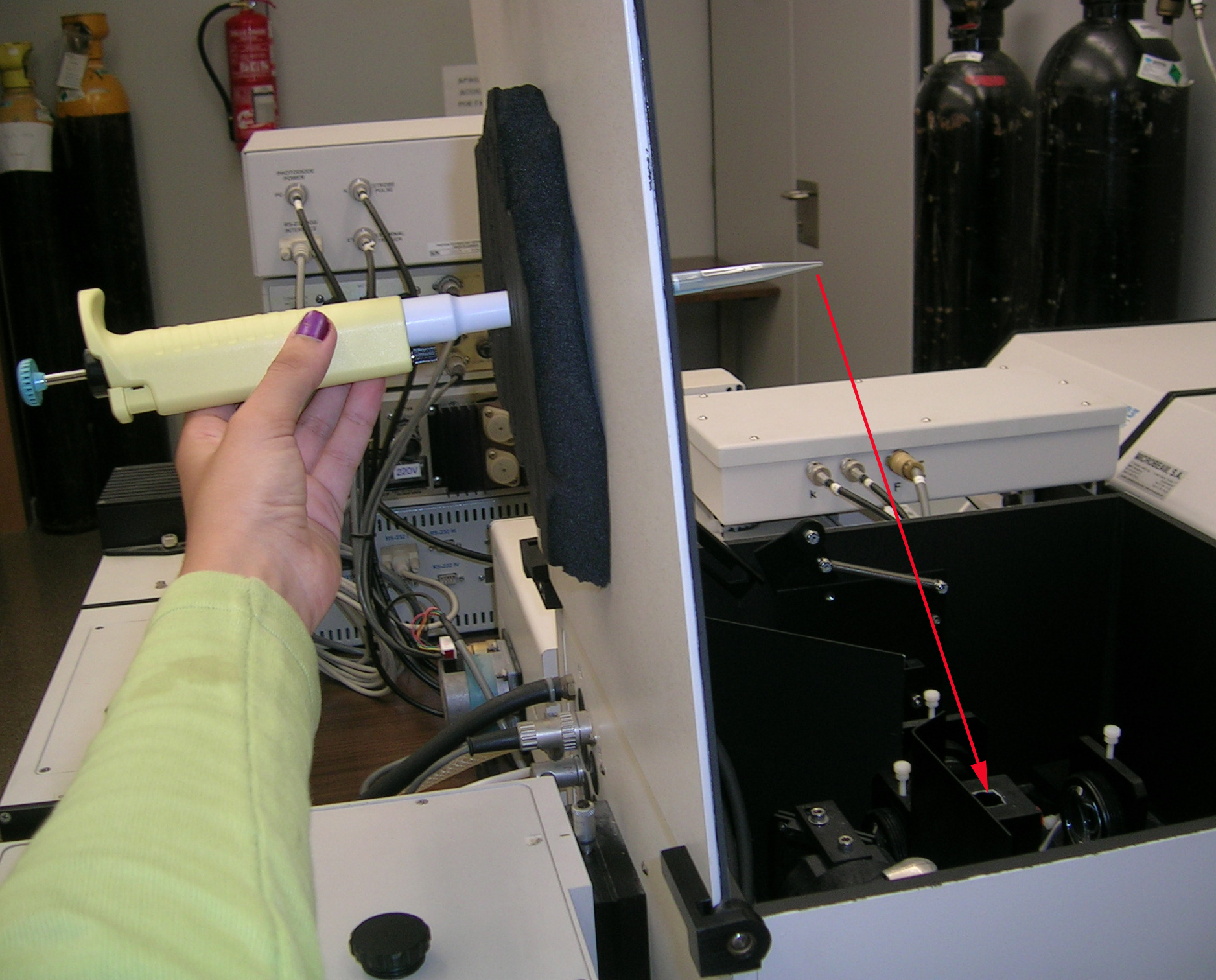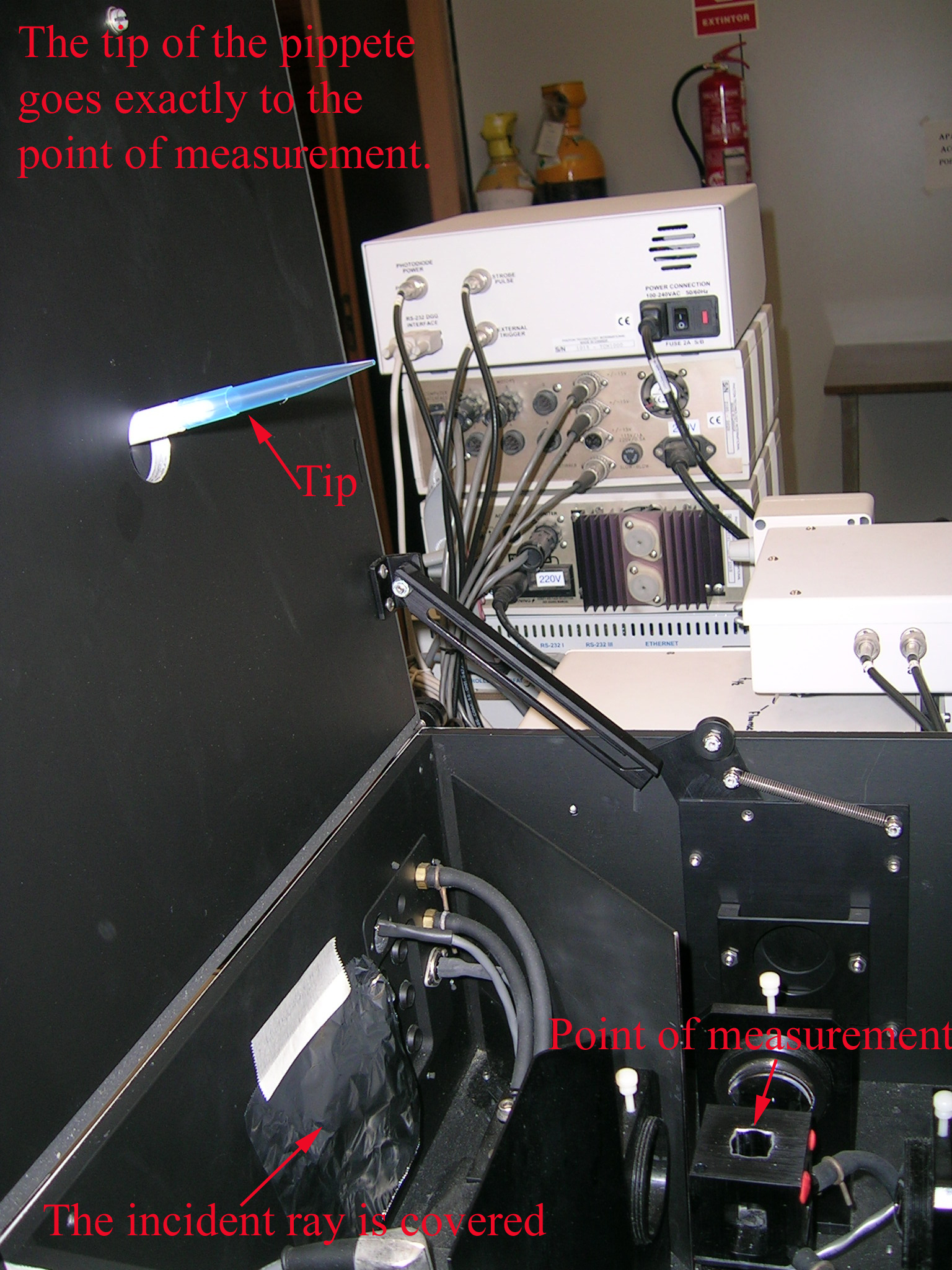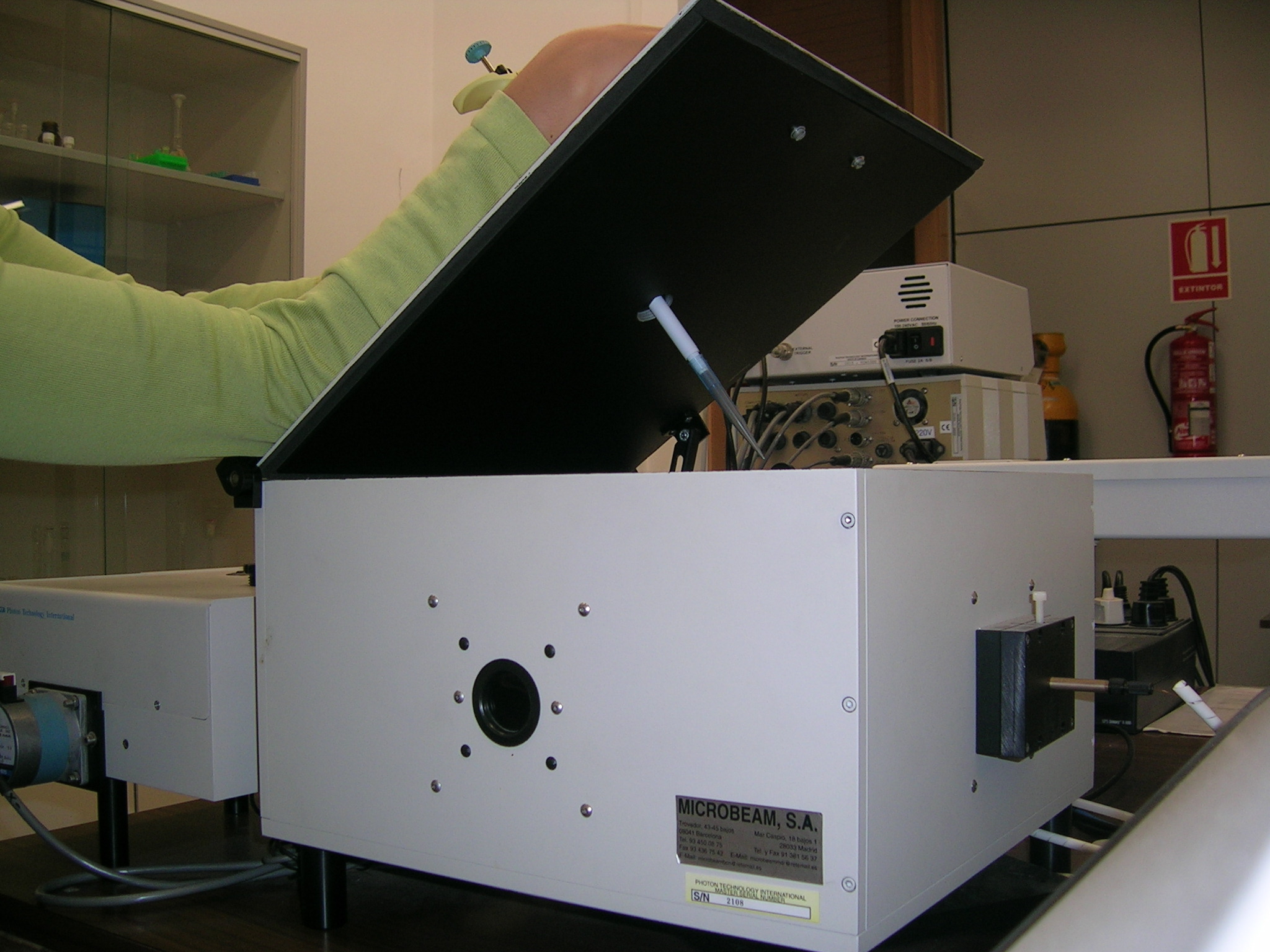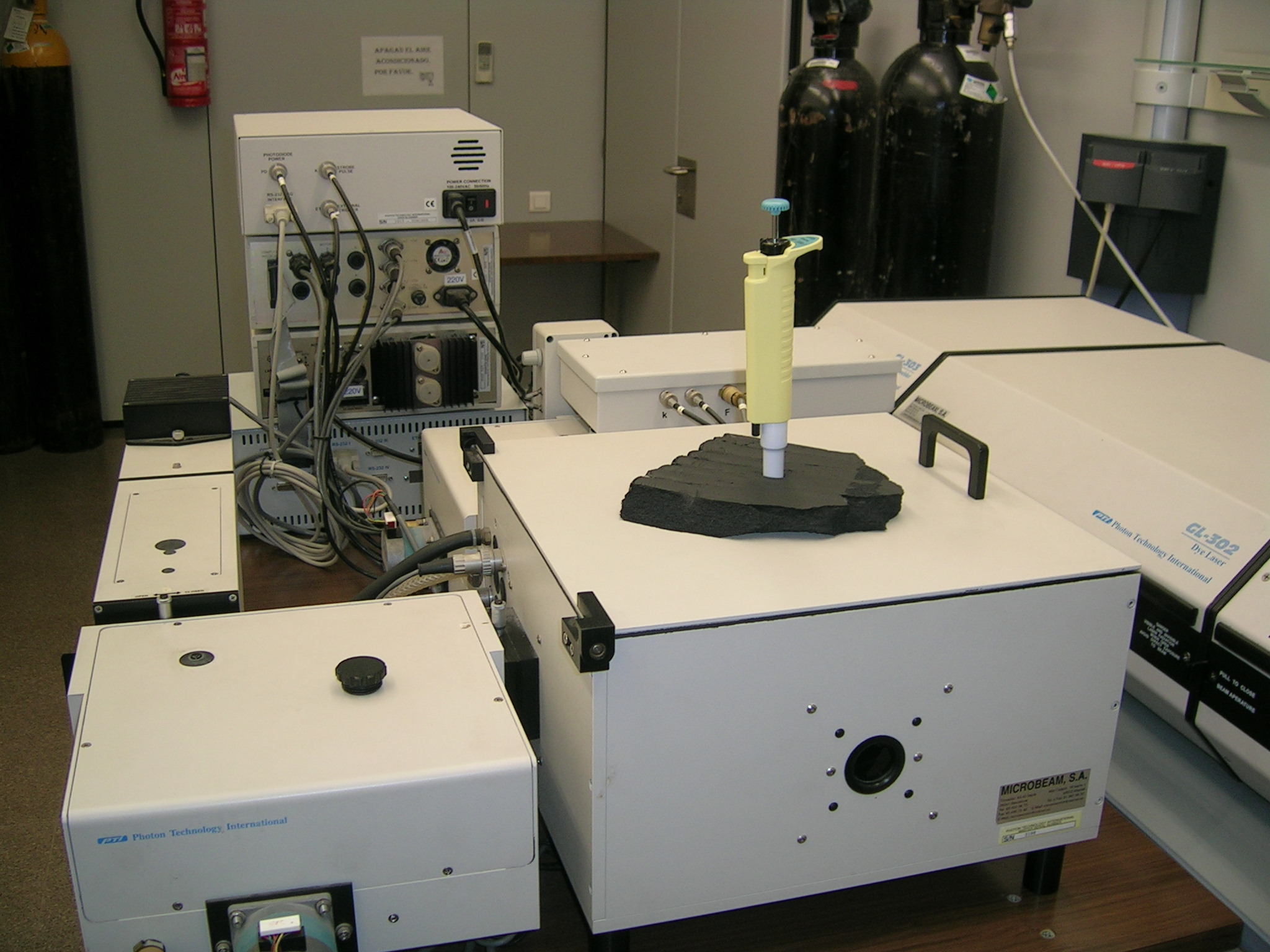Team:Valencia/WetLab/YeastTeam/Protocols
From 2009.igem.org
(→Different experimental designs) |
(→Different experimental designs) |
||
| Line 79: | Line 79: | ||
<div style="color:black; text-align:center; font-size:12pt; font-family: Verdana"><b>GELDOC</b></div> | <div style="color:black; text-align:center; font-size:12pt; font-family: Verdana"><b>GELDOC</b></div> | ||
| - | + | ||
| - | + | ||
| - | + | ||
Revision as of 10:09, 4 October 2009
Protocol used to make our yeasts produce light
PROTOCOL OF CITOPLASMATIC Ca2+ INCREASEMENT MEASUREMENT IN S. cerevisiae
Modified from the original Denis and Cyert (2002) JCB 156; 29-34.
Material:
- pEVP11[AEQ] plasmid: apoaequorina expression (Batiza et al. (1996) J.Biol.Chem. 271: 23357-62).
- Coelenterazine solution: Diluted coelenterazine until 590μM in satured N2 metanol. This compound is extremely photosensible and it's inhibited by O2. Keep at –20ºC.
Note: We bought Coelenterazine, Native (CLZn) 50 μg Ref. C-2230 de SIGMA. We put N2 gas into metanol during 5 minutes, and we added inmediately 200μL to the 50μg of coelenterazine.
- Luminometer.
- Luminometer tubes and ELISA plaques.
Procedure:
1. We recieved pEVP11[AEQ] aequorin transformed yeast from Joaquin Arinyo.
2. We let growing up o/n in SD lacking Leu medium to maintain plasmid expression.
3. After incubation, measure OD a 660nm y calculate the necessary volum to obtain in 250μL a final OD of 1,8. Put that volum into an eppendorf tube with a hole in its tap.
4. Centrifugate 1 minute at 13000rpm.
5. Discard the supernatant.
6. Resuspend the pellet into 250μL of fresh medium with coelenterazine 2μM (aprox. 3,5μL of coelenterazinestock solution / μL de medio).
7. Incubate during 5,5 horas at ambient temperature, in agitation and keeping in the darkness.
8. Centrifugate 1 minute at 13000rpm. Discard the supernatant and resuspend in SD lacking Leu fresh medium without coelenterazine (see the proper volum below *).
9. Wait 15 min (yeast luminiscence is increased due to a peak of Ca2+ is induced by the glucose (Nakajimashimada et al. (1991) PNAS 88; 6878-82).
10. Measure basal luminiscence during 15 minutes.
11. Add the correct reactive volum to induce luminiscence.
In the chase of alcaline induction:
8. *Add 170μL of medium.
9. Add 30μL of KOH 100mM.
Other stress types:
NaCl: 30μL NaCl 5M (0,75M final).
CaCl2: 30μL CaCl2 1.33M (200mM final).
KCl: 30μL KCl 100mM.
Note: yeasts should be treated secuentialy and in the same way to obtain reproducible results.
Different experimental designs
To make measurements properly and determinate luminiscence levels, we needed a luminometer. But we couldn’t use one before September. So, if we didn’t want to waste our limited time, we decided to try with other machines. This way, we had dt ideas, and we thought a GelDoc camera, an espectophotometer and a espectofluorimeter could be useful for us, at least to determinate the presence/absence of the luminiscence.
That was the first idea we got. It consisted to try to capture the luminiscence produced by our yeast with the camera that is normaly used to take gel photos. We thought that if we increased exposure time, we could acumulate enough luminiscence produced in time to see it, at the photo.
We put our yeast after the different steps of our protocol in a multi-hole plaque and add the alcaline input. Fastly, we used to close the GelDoc door, but we had doubts about the velocity of the response, and we couldn’t be inside the GelDoc to start the measure at the same time we make the input. In order to make sure our yeasts weren’t making light too fast, we designed a very simple but precise mechanism. We called it PippeteEnlarger.
PIPPETE ENLARGER
The Pippete Enlarger is easy to assemble using a pippete, a thin tube and two pippete tips: one has to fit into the tub (so size tip deppends on size tub) and the another one has to be the proper tip to take the volume we want. So, we will explain the mechanisme in the way we did it. We needed to make an input of 30 microliters of KOH without open the door. We had to enlarge the pippete to put the tip in the correct hole with the closed door and trigger the mechanism out of the GelDoc. We decided to full the tube with KOH, make pressure in one of the extrems of the tube, preventing by capilarity the liquid go away, and connect the pippete with an intermediary tip in the other extrem (the volume had to be already prefixed). The extrem we were pressing could be released at this point, so we could put the correct tip (in our chase, a yellow tip) to catch the desired volume. Before to be loaded with 30 microliters of KOH, we fixed the tip in the hole we wanted, we closed the door and carry on the pippete outside the GelDoc. We were ready to start the measurement, making sure we increased enough the exposure time. Then, we pulled out the 30 microlitres actioning the pippete. It was surprisingly acurate!!! The volume was almost exactly, with 1 or 2 microliters of error. We dind’t got any result. We could rule out, then, the possibility that our yeasts produce light meanwhile we were putting them in the GelDoc, or we were closing the door...
GelDoc camera was not an efficient way to detect our luminiscence, so we thought perhaps a spectrophotometer was a more addient machine.
Spectrophotometer
Altough an espectophotometer is a machine that measures how cloudy a sample is, by emitting a ray of light, we can “trick” the machine. Sticking a piece of silver paper in one of the faces of the little tank, we prevent the ray of light cross the sample. The idea is to measure only the light produced by the sample, not the “crossing light”.
We didn’t obtain any result, but that was probably because the spectrophotometer has been designed to detect a very located light ray, not a difused light produced by a bioluminiscent sample.
Spectrofluorimeter
Spectrofluorimeter measures the fluorescence of a sample. That’s because it has the same problem of the spectrophotometer. However, we found that it’s more sensible (it detects a great quantity of noise). So we thought it could be a more proper machine to our purposes.
We designed a similar experiment, covering the place where the ray of light is emited, in order to measure only the bioluminiscence produced by our yeasts. We didn’t obtain any result. But we were worried about the speed of the reaction another time. Then, we decided to rule out the possibility as we did it with the GelDoc: starting the measure before adding the alkaline input. But this machine was different, so we designed a different experiment. We found a hole (normaly closed) in the tap, just uppon the the place where the sample is. Using a piece of termaflex, we crossed it with the pippete, and put it in the hole, isolating the overture and preventing light got in and artefact our result. Another time, that was extremely acurate, and when we closed the door, the tip went exactly to the point where our sample was placed. This way, we started to measure before adding the input. Next, we pulled out hte 30 microliters of KOH in the little tank. We got depressed when we didn’t obtain results. But for this time, we were in September, and the luminometer was available for us.
In some days, our hard work was going to give us nice surprises.
 "
"
